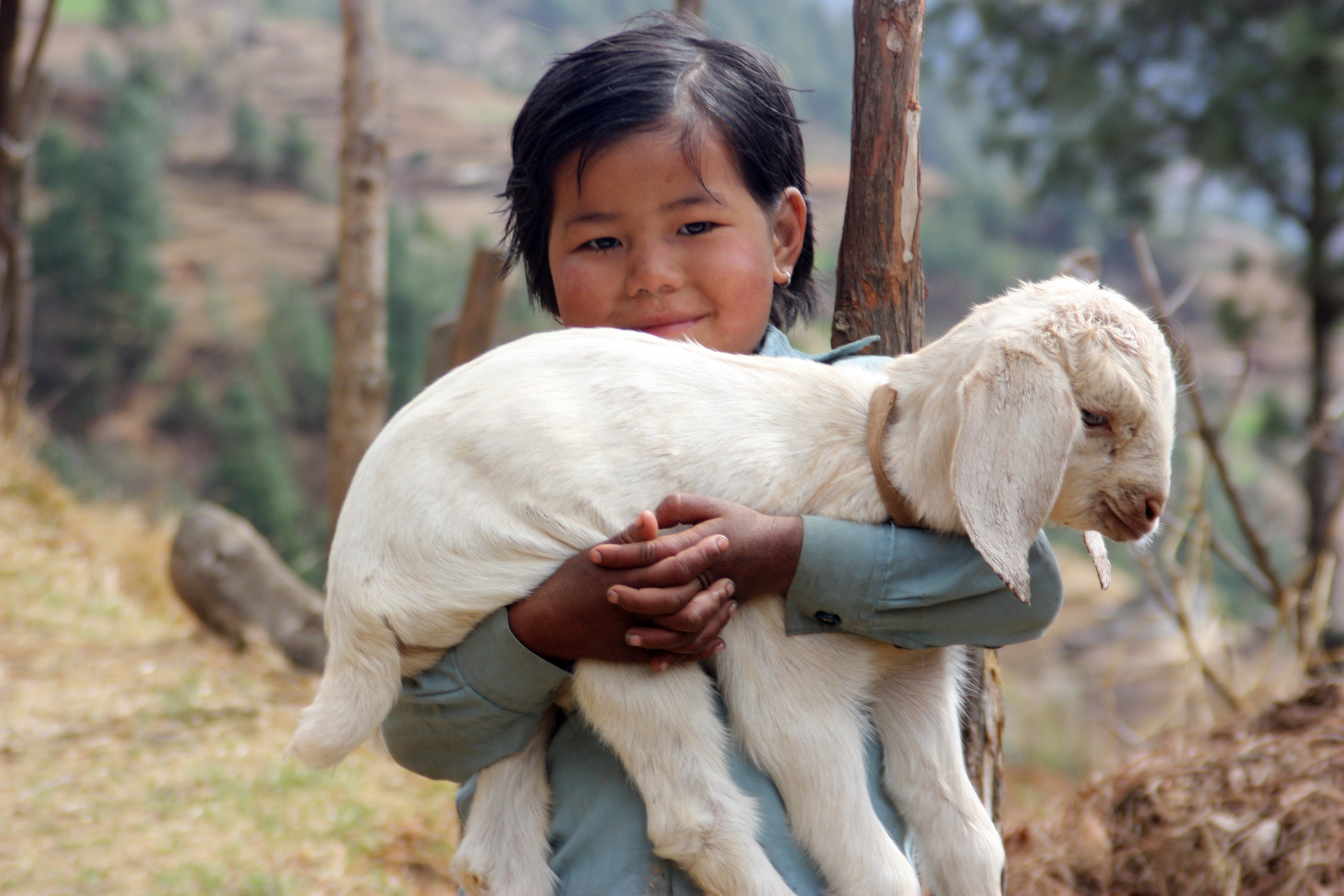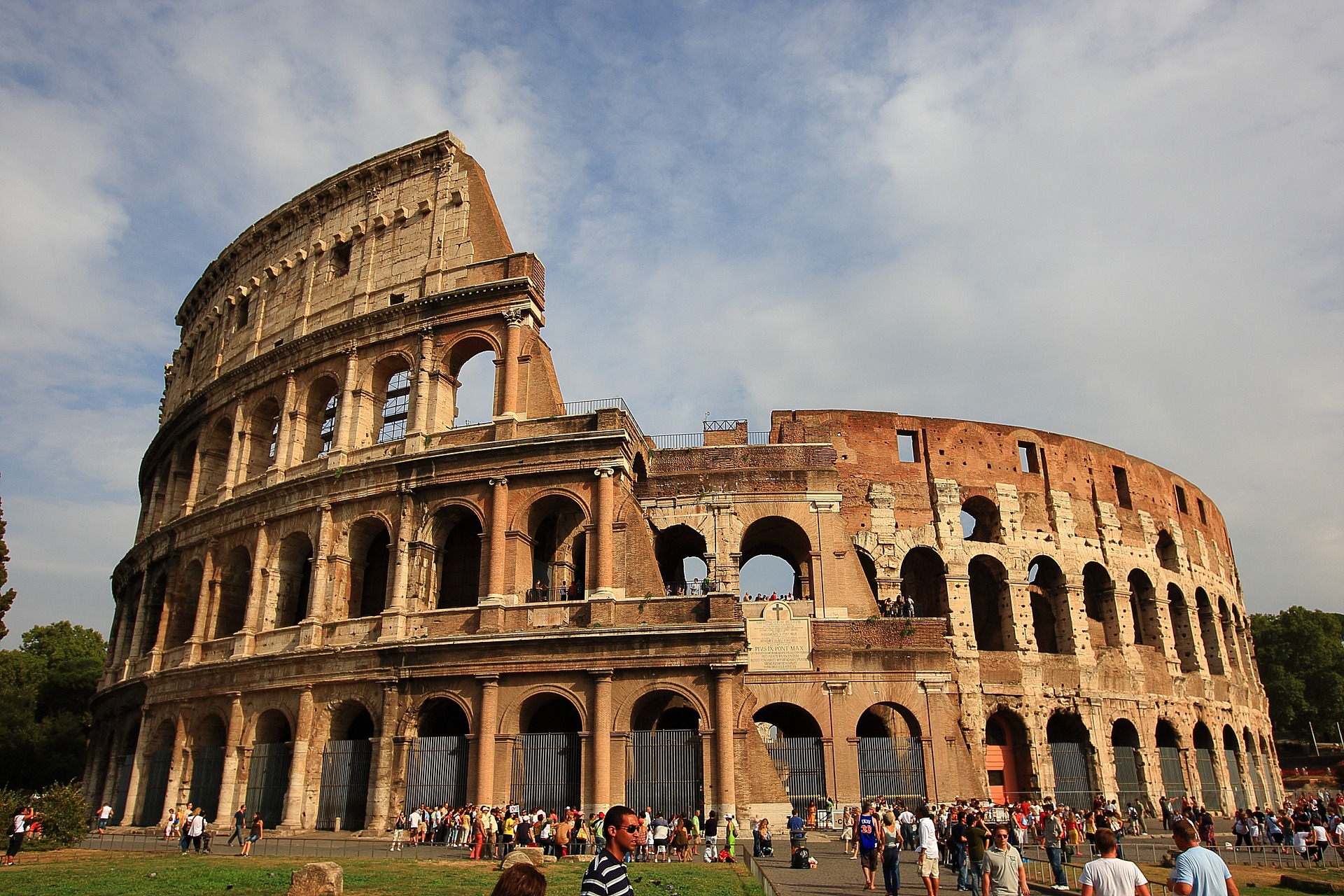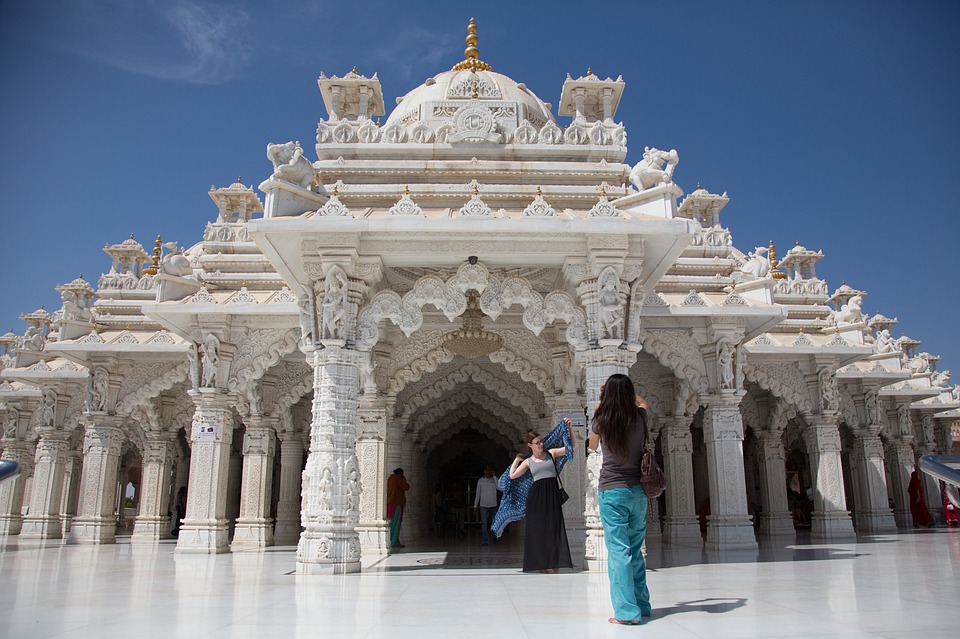On the mesmerizing Coromandel Coast of India, Chennai, the vibrant capital of Tamil Nadu, is a city with a rich cultural heritage and ancient traditions.
Amidst its bustling streets and modern skyline, Chennai hides a treasure trove of architectural marvels that have withstood the test of time – the most famous temples in Chennai.
These sacred abodes not only serve as places of worship but also stand as living testaments to the city’s deep-rooted spirituality and artistic brilliance.
If you are planning on visiting Chennai soon whether for travel or work, consider paying a visit to the famous temples in Chennai.
These temples Not only will you be able to get a glimpse into the religious heritage of Chennai and India, but you will also get to witness magnificent architecture and artistry.
In this article, we will share some fascinating anecdotes, historical facts, and architectural insights on some of the famous temples in Chennai. So fasten your seat belts and get ready to go on a virtual tour of temples in Chennai.
Famous Temples In Chennai Open Now: The Abodes Of Hindu Gods And Goddesses
Chennai, India is filled with temples that have been standing for centuries. Each of these temples with its stunning architectural style, intriguing myths and legends, and unique religious practices showcases the diversity and grandeur of Chennai’s spiritual and cultural landscape. Here are some of the most famous temples in Chennai that you should visit at least once –
1. Kapaleeswarar Temple
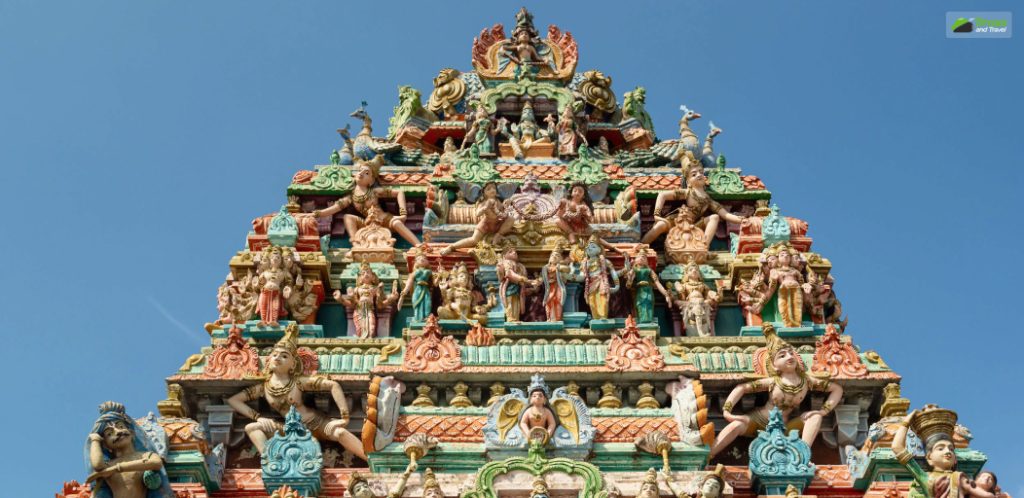
Opening Hours: 6 AM-1 PM (Morning) & 4 PM-8 PM (Afternoon)
Location: 12, North Mada Street, Mylapore, Chennai
Major Festival: Theppam Festival
⁍ History And Architecture
Built during the 7th century by the Pallava dynasty, this temple features a towering 37-meter gopuram (entrance tower) and intricate stone carvings depicting various mythological scenes and deities.
The temple’s courtyards and corridors have colorful frescoes and carvings depicting stories from Hindu mythology.
The architecture of Kapaleeshwarar Temple showcases the Dravidian style, characterized by intricately carved gopurams (gateway towers), mandapams (halls), and ornate sculptures.
Once inside the temple complex, you’ll feel transported back in time. The ancient stone walls and pillars, covered in artistic depictions of religious figures and events, surround a water tank used for ritual bathing.
⁍ The Deity And Rituals
In the inner sanctum, you can see the presiding deity of the temple is Lord Kapaleeshwarar, an incarnation of Lord Shiva. Puja ceremonies take place three times daily.
This Shiva Temple in Chennai is the epicenter of many festivals, with the Arupathimoovar festival being the most popular.
This ten-day festival, celebrated in the Tamil month of Panguni (March-April), attracts thousands of devotees who gather to witness the grand processions, music, dance, and religious rituals.
2. Parthasarathy Temple
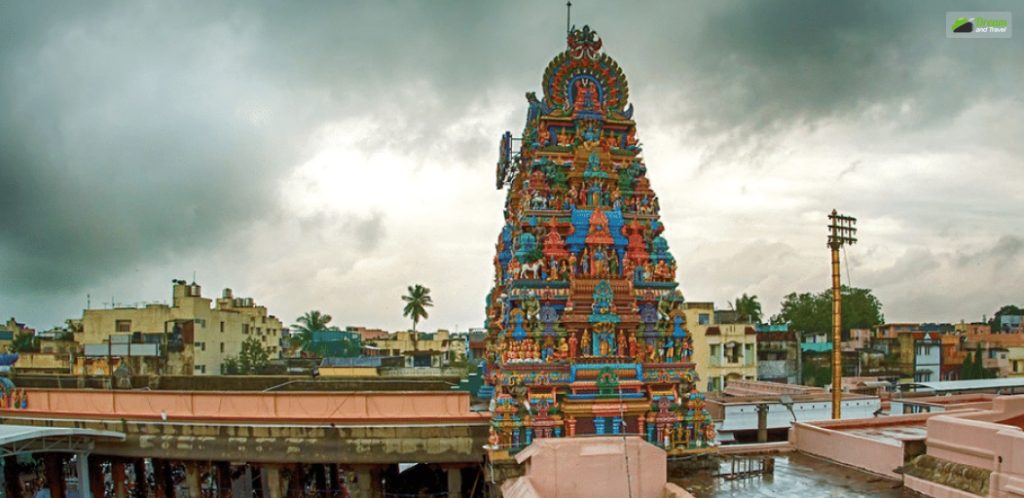
Opening Hours: 5:50 AM – 12:30 PM (Morning) & 4 PM – 9 PM (Evening)
Location: Narayana Krishnaraja Puram, Triplicane, Chennai
Major Festival: Float festival, Brahmotsavam and Vaikunta Ekadasi
The Parthasarathy Temple is one of the oldest and most impressive Chennai temples of Lord Vishnu.
⁍ History And Architecture
This 8th-century temple has architectural and historical significance.
As you enter through the main gopuram (tower), you’ll see the stunning carvings and paintings that decorate the walls and ceilings. The famous temple in Chennai has a traditional Dravidian style with intricately carved pillars, arches, and frescos.
The Parthasarathy Temple is one of the most famous temples in Chennai with a rich history. The rulers of the Pallava, Chola, Vijayanagar, and Arcot dynasties were the patrons of this temple. Many Vaishnavite saints, including the Alwars, have worshiped here.
⁍ The Deity And Rituals
The main shrine houses Lord Vishnu in different poses – sitting, standing, and reclining. The reclining Vishnu is a rare form and a must-see. The temple also has shrines for Lord Krishna and Gajendra (the elephant) that depict famous scenes from Hindu epics.
3. Ashthalakshmi Temple

Opening Hours: 6:30 AM – 12 PM (Morning) & 6 PM – 9 PM (Evening)
Location: Elliot Beach, Besant Nagar, Chennai
Major Festival: Navratri, Deepawali, Pavitra Utsavam, Janmashtami
The Ashtalakshmi Kovil is one of the most famous Amman temples in Chennai, worshipping the eight forms of the Goddess Lakshmi. In Besant Nagar, this temple stands out for its architectural and sculptural beauty.
⁍ The Deity And The Rituals
As the name suggests, the Ashtalakshmi Kovil is dedicated to the eight incarnations of Lakshmi – Aadi Lakshmi, Dhanya Lakshmi, Dhairya Lakshmi, Gaja Lakshmi, Santana Lakshmi, Vijaya Lakshmi, Dhana Lakshmi, and Dhanya Lakshmi.
The eight shrines of the temple represent these eight forms of the Goddess. The temple also has separate shrines for Lord Vishnu, the consort of Lakshmi, and their son Kama Deva.
⁍ History And Architecture
The temple has a traditional Dravidian style, with intricately carved pillars and sculptures. The ‘garbhagriha,’ or sanctum sanctorum, houses the idol of Mahalakshmi, the primary deity of the temple.
The walls and pillars of the temple depict sculptures of various mythological scenes, including Krishna Leela. The temple also has a separate shrine for Navagraha, the nine planets.
4. Kalikambal Temple

Opening Hours: 6:00 AM to 12:00 PM (Morning) & 5:00 PM to 9:00 PM (Evening)
Location: Thambu Chetty St, near DHL Express Courier, Mannady, George Town, Chennai
Major Festival: Vasanta Navaratri, Navaratri (September-October), Maasi Makam festival, Brahmotsavam
The Kalikambal Temple is Goddess Kali, the fierce form of Parvati’s Chennai home. Located in George Town, Chennai, this temple dates back to the 17th century.
⁍ History And Architecture
Maratha king Shivaji’s general Tanjore Nayaks built this temple in 1640. The main deities worshiped here are Goddess Kali, also known as Kalikambal, and her consort, Lord Shiva.
The temple showcases a mix of Dravidian and colonial architecture. At the entrance, you’ll find a majestic Rajagopuram tower with intricately carved figures of deities and depictions of religious events. The temple also has a sacred tree, marble flooring, and massive stone pillars.
⁍ The Deity And Rituals
Special pujas are held during full moon days, new moon days, Fridays, and Sundays. Navaratri and Kali Puja are major festivals celebrated here with much fanfare.
During Navaratri, devotees come to seek the blessings of Goddess Kali by chanting mantras, offering coconuts, and lighting lamps.
4. Sri Vadapalani Andavar Temple

Opening Hours: 5:30 AM to 9:30 PM
Location: Palani Andavar Koil Street, Vadapalani, Chennai
Major Festival: Vaikasi and Brahmotsavam
The Vadapalani Andavar Temple is one of the most celebrated Murugan shrines in Chennai. Located in Vadapalani. Lord Murugan, or Karthikeya, is the son of Shiva and Parvati.
⁍ The Deity And Rituals
Many come here to pray for happy and peaceful marriages, children, and the removal of obstacles.
The temple houses several small shrines dedicated to other deities like Vinayagar, Dakshinamoorthy, Lingotbavar, and Navagrahas.
However, the presiding deity is Lord Murugan, who is portrayed as a charming youth. He stands holding a vel or spear, his weapon of choice, accompanied by his consorts Valli and Devasena.
Two of the biggest festivals celebrated here are Thaipusam and Panguni Uthiram. During Thaipusam, devotees carry ‘kavadis,’ or heavy burdens, as offerings to Lord Murugan.
Panguni Uthiram marks the wedding of Murugan with his consort Devasena. On this day, the deities are dressed as bride and groom and taken out in a grand procession.
The temple also has a shrine for the Goddess Vadivudai Amman, who appeared to a devotee in a dream. He asked the devotee to build a temple here. Due to this, the temple got the name Vadapalani, meaning ‘appeared in a dream.’
⁍ History And Architecture
The history of the temple dates back to the 17th century. However, the current structure dates back to the 1890s.
The temple has a Dravidian architecture, and the entrance looks majestic with the rajagopuram and stucco images. Further, the images here are of characters from the Skanda Purana.
With a height of about 41 meters, the eastern tower of the temple instantly grabs your attention. You will notice 108 Mudras or gestures of the Bharat Natyan dance form on this pillar.
6. Marundheeswarar Temple
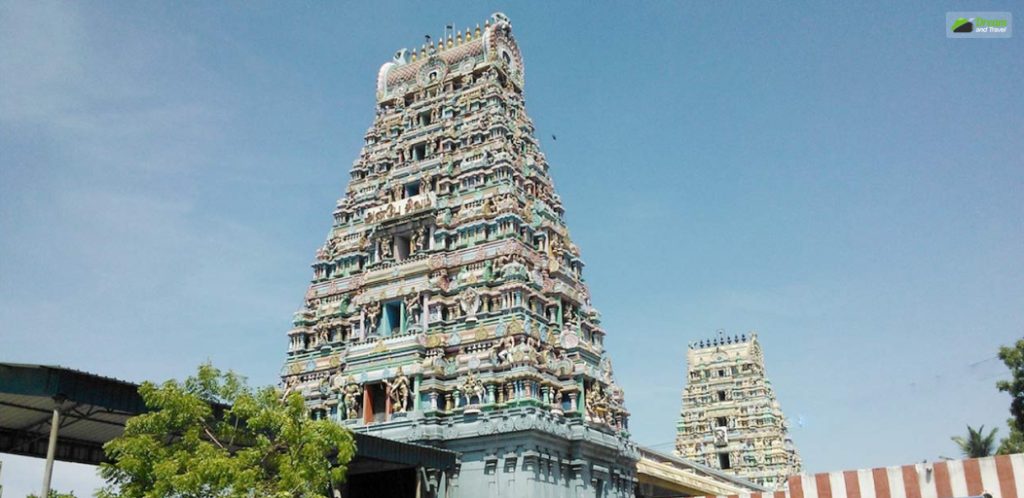
Opening Hours: 9:00 AM to 8:00 PM
Location: W Tank St, Lalitha Nagar, Thiruvanmiyur, Chennai
Major Festival: Brahmotsavam, Shivaratri, Ganesh Chaturthi and Skanda Sashti
Marundheeswarar Temple, also known as Marundeeswarar or Marutheeswarar Temple, is one of the most famous temples in Chennai, located in the city of Thiruvanmiyur in Chennai, Tamil Nadu, India.
It is dedicated to Lord Shiva and is one of the oldest temples in the region.
⁍ The Deity And Rituals
This Shiva temple Chennai is renowned for its association with healing powers and is considered a significant pilgrimage site for devotees seeking relief from various ailments.
The name “Marundheeswarar” translates to “Lord of Medicines” in Tamil, highlighting the temple’s connection to traditional medicine and healing.
The temple complex has several shrines dedicated to different deities, including Lord Shiva in the form of Marundheeswarar and his consort, Goddess Thiripurasundari.
One of the prominent features of the temple is the sacred tank, known as “Sooli Theertham,” located within the premises.
Devotees believe that taking a dip in this tank can cure various ailments and bring about spiritual purification.
Marundheeswarar Temple attracts a large number of visitors, particularly on special occasions like Maha Shivaratri, when devotees gather to offer prayers and seek blessings from Lord Shiva.
The temple also serves as a center for cultural and religious activities, hosting festivals and religious ceremonies throughout the year.
⁍ History And Architecture
Architecture-wise, Marundheeswarar Temple showcases a Dravidian style of architecture characterized by towering gopurams (gateway towers) adorned with intricate sculptures and carvings.
The towering gopuram structure is called the Raja Gopuram. It has 5 tiers. Further, the tower above the Garbh Griha, or the “sanctum Sanctorum of Marundheeswarar,” shows a Chaturvastam design.
In addition, you will find embellishments on the pillars and stucco images adorning the towers and walls of the temple. Moreover, the temple has a mandapam or house of Lord Lord Somaskanda. He is an incarnation of Lord Shiva.
This mandapam has 36 pillars, and its carvings will immediately grab your attention.
There are two gates to enter the temple. You can enter the abode from the East Coast Road or West Tank Street.
7. Ekambareswarar Temple
Opening Hours: 6:00 AM to 1:30 PM (Morning) & 4:30 PM to 8:00 PM (Evening)
Location: Ekambaranathar Sannathi St, Periya, Kanchipuram (3 hours from Chennai)
Major Festival: Panguni Uthiram
Ekambareswarar Temple, also known as Ekambaranathar Temple, is a historic Hindu temple dedicated to Lord Shiva located in Kanchipuram, Tamil Nadu, India. One of the famous temples in Chennai, it is also one of the Pancha Bhoota Sthalam, representing the element of Earth (Prithvi).
⁍ History And Architecture
This Chennai Shiva temple has a rich history dating back over a thousand years and is considered one of the most significant temples in South India. It is believed to have been built and expanded by various dynasties, including the Pallavas, Cholas, and Vijayanagara Empire.
The temple complex also houses shrines dedicated to various other deities, including Kamakshi Amman, the Goddess consort of Lord Ekambareswarar.
The architecture of the temple is a blend of various dynastic styles, reflecting the contributions made by different ruling dynasties over the centuries.
The gopuram (gateway tower) at the entrance is an impressive structure with intricate sculptures and carvings. The temple complex covers a vast area and includes several mandapams (halls), tanks, and smaller shrines.
One of the notable features of the Ekambareswarar Temple is the ancient mango tree, “Asthana Mandapam,” within the temple complex.
This mango tree is 3,500 years old and sacred. The tree represents the manifestation of the deity and changes its color with the seasons.
⁍ The Deity And Rituals
The main deity of the Ekambareswarar Temple is Lord Shiva, worshipped in the form of Ekambareswarar or Ekambaranathar.
A massive lingam (one of the largest in India) represents the presiding deity. The lingam, or Prithvi Lingam, symbolizes the element of Earth.
As one of the most famous temples in Chennai, this place attracts a large number of devotees and pilgrims throughout the year, especially during festivals like Maha Shivaratri and the Panguni Uthiram festival.
These festivals involve elaborate rituals, processions, and special prayers.
8. Chennakesava Perumal Temple
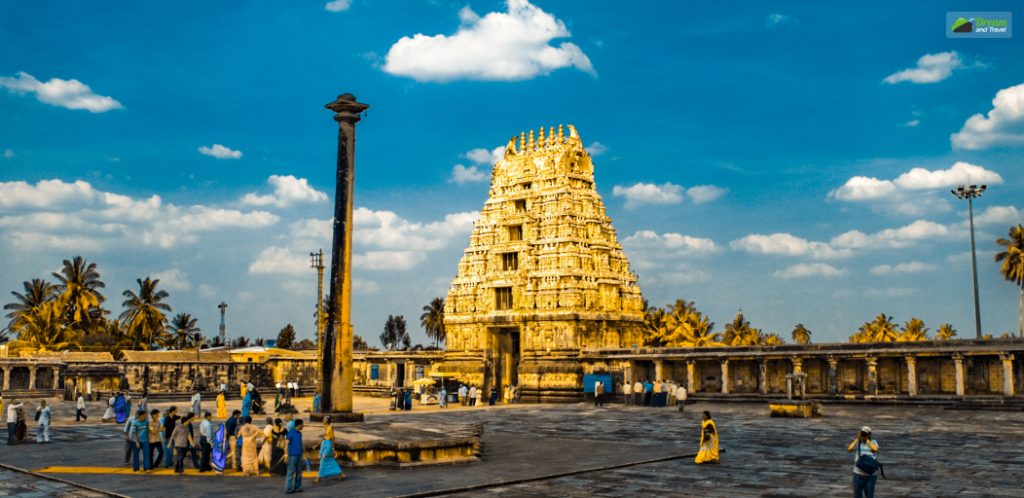
Opening Hours: 7:00 AM to 8:00 AM (Morning) & 5.00 pm – 8.30 pm (Evening)
Location: Devaraja Mudali St, Rattan Bazaar, George Town, Chennai
Major Festival: Brahmotsavam
Chennakesava Perumal Temple, also known as Thiru Kovalur Temple, is a renowned Hindu temple dedicated to Lord Vishnu. If you are in Chennai and searching for Perumal Kovil near me, then this temple is the one you should consider visiting.
Along with being one of the famous temples in Chennai, It is also one of the 108 Divya Desams, which are the sacred abodes of Lord Vishnu as described in the Vaishnava tradition.
⁍ History And Architecture
The temple was constructed during the Chola dynasty in the 9th century and later expanded by the Vijayanagara Empire. It showcases the architectural style of the Chola period, with intricate carvings and sculptures adorning its walls.
The temple complex is known for its impressive gopurams (gateway towers) and mandapams (halls). The Rajagopuram, the main gateway tower, is particularly noteworthy for its architectural grandeur.
The walls of the temple are adorned with intricate carvings depicting various mythological scenes, deities, and celestial beings.
⁍ The Deity And Rituals
The presiding deity of the Chennakesava Perumal Temple is Lord Chennakesava Perumal, a form of Lord Vishnu. The idol of Lord Chennakesava is depicted in a standing posture, holding various divine weapons and ornaments.
The sanctum sanctorum of the temple also houses shrines dedicated to Goddess Lakshmi and Lord Narasimha.
Chennakesava Perumal Temple is one of the most famous temples in Chennai. It is considered sacred by devotees of Lord Vishnu, who visit the temple to seek the blessings of the presiding deity.
The temple hosts several festivals and religious ceremonies throughout the year, with the Brahmotsavam being the most significant celebration.
If you are looking for more Perumal temple near me, then you can visit the Prasanna Venkata Narasimha Perumal Temple, which is in Perumal Koil St, Sarathy Nagar, Saidapet, Chennai.
Stories That No One Tells You About The Famous Temples In Chennai: A Dream And Travel Exclusive

The famous temples are goldmines of folklore and myths. Some of these temples also have associations with the Ramayana and Mahabharata.
These stories are as fascinating (if not more) as the history and architectural features. So, here is a sincere attempt to unearth the stories no one talks about.
⁍ Kapaleeswarar Temple
The Kapaleeswarar Temple gets its name after the Kapalam incident involving Lord Shiva and Brahma. Lord Shiva pinched one head of Lord Brahma to end his pride. The Kapalam, or forehead of the pinched face of Brahma got attached to the hand of Lord Shiva.
Later, Lord Brahma built a lingam here and did long penance.
Further, this place is famous as Mylapore as Goddess Parvati did penance here in the form of a peahen or mayil.
⁍ Parthasarathy Temple
Parthasarathy Temple is related to the stories of the Mahabharata. In the Mahabharata, Arjuna, or the third Pandava, was called Partha, the son of Pritha or Kunti.
Lord Krishna was the Sarathi or Charioteer in the great war of Kurukshetra. When King Sumati wanted to worship Lord Krisha in the form of Parthasarathy, Sage Veda Vyasa, the author of the Mahabharata sent him to this place.
After reaching this place, he found Sage Atreya doing penance here. Together, they built the temple.
This temple is also the place where the famous seven sages, or Saptrishies, worshipped the five great warriors or Panchaveeras. Those Panchaveeras are Parthasarathy, Balarama, Satyaki, Pradyumna, and Aniruddha.
⁍ Ashthalakshmi Temple
In Ashthalakshmi Temple, Lord Vishnu married eight forms of Goddess Lakshmi. All of the forms reside here in the temple.
Along with granting Ashta Aishwaryam, or eight-fold wealth, Goddess Lakshmi here also grants Ashtama Siddhi or eight achievements.
⁍ Kalikambal Temple
The Kalikambal Temple has an association with legends like the great Maratha King and warrior Chatrapathi Sivaji. He paid a visit to this temple on 3rd October 1677. As he returned to his kingdom, he won a battle. Further, according to popular beliefs, Sivaji Maharaj got the title of Chatrapathi after his visit to this temple.
Furthermore, Subramanya Bharathiar, the famous Tamil poet, was an ardent follower of the deity. Today, people believe in the mystical powers of the temple.
⁍ Sri Vadapalani Andavar Temple
Sri Vadapalani Andavar Temple tells the stories of Annaswami Nayakar, an ardent devotee of Lord Murugan. He found a cure for his chronic stomach ailment and achieved divine power after worshipping Lord Murugan.
He had many miraculous encounters with the Lord and his grandson, Irathinasami Settiyar, built the current temple in 1865.
⁍ Marundheeswarar Temple
Marundheeswarar Temple is the place where Saint Agaistiyar learned about medicines and healing from Lord Shiva. Saint Agaistiyar is one of the seven great saints or Sapta Rishis in Hinduism, and he is an important figure in Shaivism.
So, people believe that visiting this temple will cure themselves of the deadliest diseases. In fact, the name Marundheeswarar consists of Marundhu and Iswar. In Tamil, Marundhu means medicines. So, the literary meaning of Marundheeswarar is the “Lord of Medicines.”
Marundheeswarar Temple also has an association with Lord Valmiki. Lord Valmiki wrote the Ramayana, and he visited this temple for penance and to leave his life of crimes.
⁍ Ekambareswarar Temple
The story of Ekambareswarar Temple revolves around the penance of Goddess Parvati and her union with Lord Shiva. The temple of Ekambareswarar, also referred to as the Lord of Mango Tree, is the place where the holy marriage of Lord Shiva and Mata Parvati or Kamakshi took place.
The stories have two versions.
Story 1:
Once, Mata Parvati made a Prithvi Lingam, or a form of Lord Shiva, out of the sand and worshipped him under the mango tree by the Vegavati River.
Goddess Ganga wanted to test her and was about to engulf the lingam. However, Mata Parvati embraced the lingam and protected it from the rampage of the water.
This devotion of Goddess Parvati impressed Lord Shiva, and he visited the place to marry her.
Story 2:
When Goddess Parvati started her penance to Lord Shiva, he wanted to test her. She was sitting under the ancient mango tree by the Vegavati River when Lord Shiva set her on fire.
The Goddess prayed to Lord Vishnu for help, and Lord Vishnu used the moon on Lord Shiva’s head to reflect white lights that soothed the Goddess.
Again, Lord Shiva sent Goddess Ganges to deter Mata Parvati. However, Goddess Parvati managed to convince her and continued her penance. Thus, Lord Shiva was convinced of her devotion and married her.










